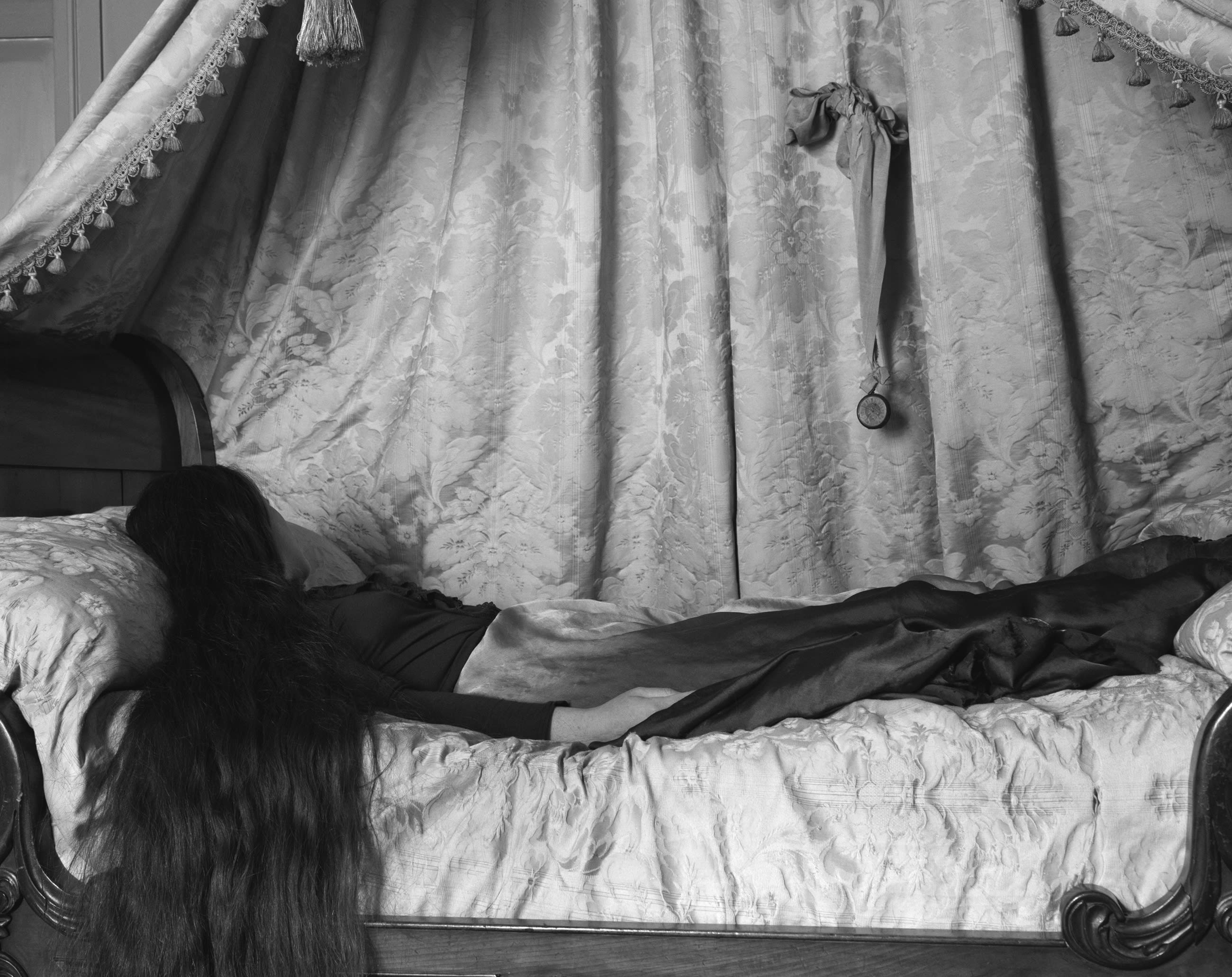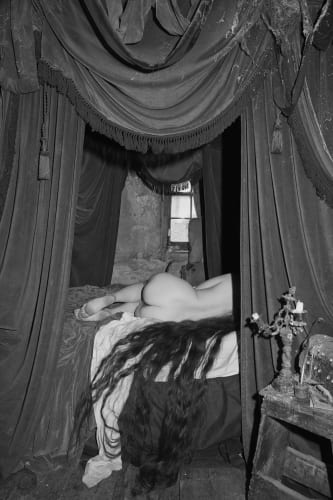"I was asked to make a double-page spread, the subject being "My London', and it struck me as strange that even though I love London and consider myself to be a true Londoner, I had never really photographed it before," Zelenkova recalls.
The artist grew up in a small town in the east of the Czech Republic, moving to the English capital in 2007 to study photography. She has lived there ever since. "For the commission, I wanted to create a homage to the Victorian aesthetics that have doubtlessly influenced my work, and I was thinking about various peculiar interiors in London," she says. One such place was Dennis Severs' House: a landmark and museum at 18 Folgate Street, in Spitalfields. The property's dark and eccentric ambience enthralled.

Oratory 2017 © Tereza Zelenkova / courtesy The Ravestijn Gallery
Zelenkova on her first visit and she wanted to explore it further. "I also wanted to work with
the model I used in these photographs because her long hair seemed to fit with the house, so I placed her within it and completely indulged myself in the hallucinatory atmosphere of fin de siècle interiors and literature," she says. The first time Zelenkova photographed at the house, she had limited access and the shoot lasted just one hour. She kept thinking about the potential of the series. Eight months later, she returned for another session and it is these pictures that developed into a personal project.
Zelenkova did not plan the images. Instead, she experimented, letting the mood guide her. "I mostly photographed in a room that presents itself as a sort of decaying time capsule. In reality, it's a carefully staged theatrical set created by Dennis Severs, consisting of both cheap props and precious antiques. Yet everything is left to decay. The furniture and fabrics are covered in cobwebs; the ceiling is leaky and the walls are peeling, she says. "I liked the solitude of this room. How it stands in sharp contrast to the outside world, and that it's a folly to some extent. Its goal is not the preservation of historical artefacts, but rather an acknowledgement of the inevitable passage of time and its effects." Meanwhile, her model, presented as a ghostly figure, appears to move through the pictures, accentuating the sense of isolation.

Oh Mirror! 2017 © Tereza Zelenkova / courtesy The Ravestijn Gallery
The Essential Solitude fits neatly into Zelenkova's oeuvre, which, like this series, is entirely photographed in black-and- white. The artist loves the timelessness of the format. "Colour can be vulgar sometimes; the same as reality," she says, "but with black-and-white, everything becomes more about textures and light. Not all things look good in monochrome, but sometimes you can transform something mediocre into a visual feast for the eyes." She often chooses analogue over digital too. Indeed, as Zelenkova puts it, she is someone "who's always been romantically in love with the unattainable past". Zelenkova has now published
The Essential Solitude as a photobook with the Athens-based publisher Void (void. photo). Bound in green and adorned with a gold illustration that shimmers on the cover, it includes prose written by the photographer herself.

Poppy head I 2017 © Tereza Zelenkova / courtesy The Ravestijn Gallery

